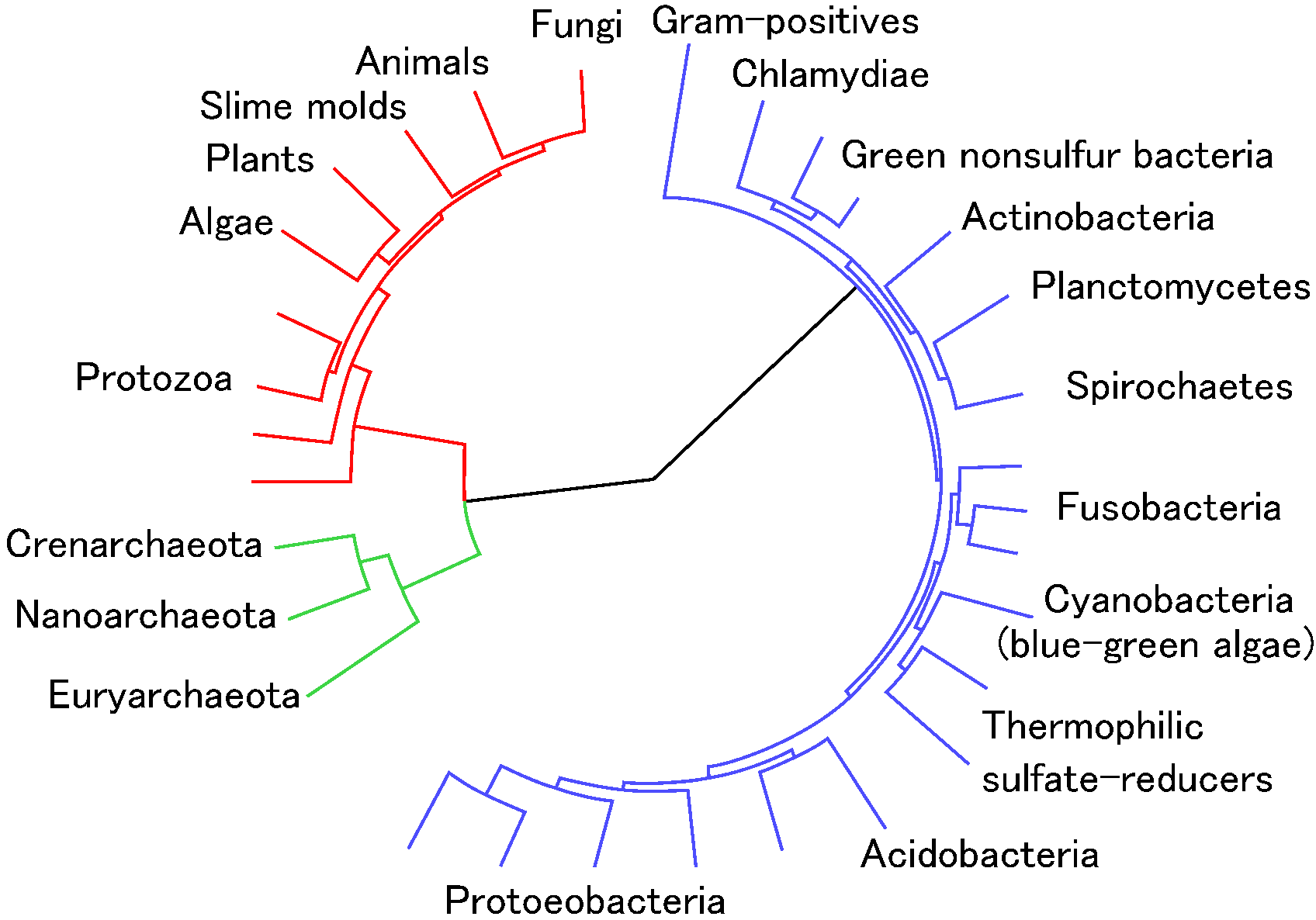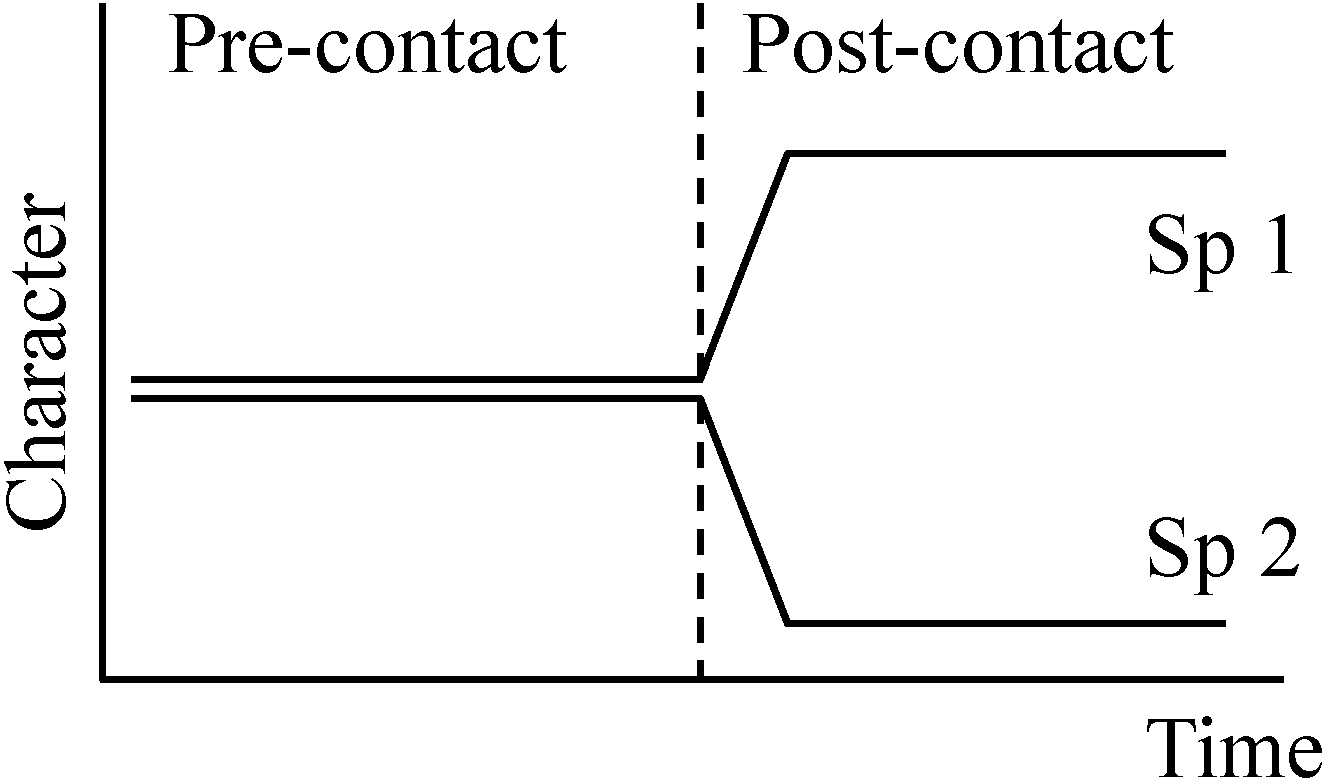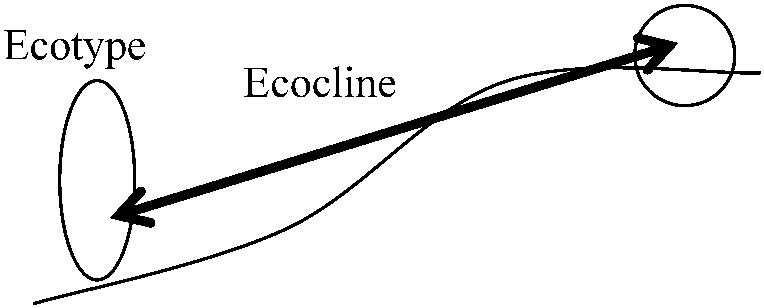(Upload on July 22 2024) [ 日本語 | English ]
Mount Usu / Sarobetsu post-mined peatland
From left: Crater basin in 1986 and 2006. Cottongrass / Daylily
HOME > Lecture catalog / Research summary > Glossary > Species
☛ plant taxonomy 植物分類学|Engler's syllabus エングラー体系] [alga 藻類|mosses 蘚苔類|fungi 菌類]

The divergence of modern taxonomical groups (mostly divisions), based on the assumption of the origin of common ancestor. |
Angiospermae 2-300,000 spp Variety: region - size |
| mammal | aves | reptile | amphibia | vascular | plant | ||||||||
| region | area × 104 km2) | islands or continent | forest (%) | spp | end | rpr | end | spp | end | spp | end | spp | end |
| Japan | 37 | islands | 68% | 188 | 22% | 250 | 8% | 87 | 38% | 61 | 74% | 5,565 | 36% |
| Indonesisa | 182 | islands | 60% | 457 | 49% | 1,530 | 27% | 514 | 59% | 285 | 40% | 29,375 | 60% |
| Malaysia | 33 | islands | 45% | 300 | 12% | 508 | 4% | 350 | 20% | 189 | 37% | 15,500 | 23% |
| Philippines | 30 | islands | 23% | 158 | 65% | 196 | 95% | 190 | 84% | 92 | 79% | 8,931 | 39% |
| Singapore | 0.06 | islands | 7% | 85 | 1% | 118 | 0% | 140 | 0% | 24 | 0% | 2,282 | 0% |
| Sri Lanka | 6 | islands | 33% | 88 | 17% | 250 | 10% | 144 | 53% | 39 | 51% | 3,314 | 27% |
| Bangladesh | 13 | continent | 8% | 109 | 0% | 295 | 0% | 119 | 2% | 19 | 0% | 5,000 | - |
| Bhutan | 5 | continent | 60% | 99 | 0% | 448 | 0% | 19 | 11% | 24 | 0% | 5,446 | 1% |
| Cambodia | 18 | continent | 56% | 123 | 0% | 307 | 0% | 82 | 1% | 28 | 0% | - | - |
| China | 933 | continent | 14% | 400 | 21% | 1,103 | 6% | 340 | 24% | 290 | 54% | 32,200 | 56% |
| India | 297 | continent | 22% | 316 | 14% | 926 | 6% | 390 | 48% | 209 | 58% | 16,000 | 31% |
| North Korea | 12 | continent | 50% | - | - | 115 | 1% | 19 | 11% | 14 | 14% | 2,898 | 4% |
| South Korea | 10 | continent | 80% | 49 | 0% | 112 | 0% | 25 | 4% | 14 | 0% | 2,898 | 8% |
| Laos | 23 | continent | 52% | 172 | 0% | 487 | 0% | 66 | 2% | 37 | 5% | - | - |
| Mongolia | 157 | continent | 6% | 133 | 0% | 426 | 0% | 22 | 0% | 6 | 0% | 2,823 | 8% |
| Myanmar | 66 | continent | 41% | 251 | 2% | 867 | 0% | 203 | 18% | 75 | 13% | 7,000 | 15% |
| Nepal | 14 | continent | 36% | 181 | 1% | 611 | 0% | 100 | 1% | 43 | 26% | 6,973 | 5% |
| Pakistan | 77 | continent | 3% | 151 | 3% | 375 | 0% | 172 | 13% | 17 | 24% | 4,950 | 8% |
| Thailand | 51 | continent | 24% | 265 | 3% | 616 | 0% | 298 | 12% | 112 | 19% | 11,625 | - |
| Vietnam | 33 | continent | 27% | 213 | 4% | 535 | 2% | 187 | 25% | 80 | 34% | 10,500 | 12% |
| Russian Federation | 1,689 | continent | 45% | 269 | 8% | 628 | 2% | 58 | 0% | 41 | 0% | - | - |
| Europe (reference) | |||||||||||||
| England | 24 | islands | 8% | 50 | 0% | 230 | 0% | 8 | 0% | 7 | 0% | 1,623 | 1% |
| Finland | 30 | continent | 67% | 60 | 0% | 248 | 0% | 5 | 0% | 5 | 0% | 1,102 | - |
| France | 55 | continent | 27% | 93 | 0% | 269 | 0% | 32 | 3% | 32 | 9% | 4,630 | 3% |
| Germany | 35 | continent | 31% | 76 | 0% | 239 | 0% | 12 | 0% | 20 | 0% | 2,632 | 0% |
| Italy | 29 | continent | 22% | 90 | 3% | 234 | 0% | 40 | 3% | 41 | 29% | 5,599 | 13% |
| Spain | 50 | continent/ islands | 16% | 82 | 5% | 278 | 2% | 53 | 21% | 28 | 14% | 5,050 | 19% |
| Units being classified | Sphere in which applicable | |
| Taxonomic species (分類学的種) | Taxa; groups of morphologically similar individuals → morphological species concept | Groups with morphological differences that are useful in formal classification ☛ Engler's syllabus |
| Biological species (生物学的種) | Sexually reproducing population systems | Sexual organisms on a single time level |
| Successional species (遷移種) | Phyletic lineages | Uniparental organisms, including asexual and parasexual organisms |
| Biosystematic species (系統学的種) | Fertility groups | Sexual plant groups which have been artificially hybridized in the experimental garden |
Good species (良い種)One taxonomic species = one biological speciesSeveral taxonomic species = one biological species Several taxonomic species = syngameon (sunsu Grant 1981)
Table. Biological species and stage
of divergence. Local race, population level or variety
Geographical race
ssp. or var. Character (形質)phylogeny (= natural classification)
genetics – micro-evolution (Maekawa 1950) Characters in multifaceted nature (多面性の形質)= characters that reflect the phylesis1. structure of flaggella (鞭毛構造)
Ex. Phycomycetes (藻菌類)
Basidiomycetes (担子菌): basidiospore, dicaryon
Chytridiales (ツボカビ類): uniflagellate flaggella (単毛) → the common character in Phycomycetes is only noncellular structrue 2. chemical structural components in cell wall3. assimilatory pigment → assimilates 4. formation mode and behavior of reproductive cells
Ex. Rhizophydium (Zygomycetes)________♀: transfer of cell contents |
ascogonium (造嚢器) / antheridium (造卵器) → trichogyne (受精毛) → ascogenous hypha (造嚢糸), forming 2n → forming ascus (担子器) Ex. biosynthesis of lysin – two pathways (Vögel 1960) AAA-pathway: α-KG acid + CH3COO-Coenzyme A → L-α-aminoadaphic δ-semialdehyde → lysin bacteria, cyanophyta, green algae, dichonomycetes DAP-pathway: L-asparatic-α-semialdehyde + pyruvic acid → L-α-ε-diamino pimelic acid → lysin Phycomycetes, ascomycetes, basidiomycetes → dichonomycetes is essentially different from the other fungal taxa Characters in tendency (偏向性の形質)1. number of flagella (鞭毛数)2. life phase (生活相) Ex. life phase (Maekawa 1947) – considered as interfacial film
1. virus phase
|
Character displacement (character divergence, 形質置換)  Fig. Character displacement inferred from character states in sympatry (同所) and allopatry (異所) (Grant 1972). Ex. Drosophilla pavlistrum complex
allopatry ___________sympatry Ex. Litoria ewingii vs L. verreauxi differences in sounds (or calls) Ex. Phlox
____________allopatry sympatry Varation (変異)1942 Mayer E: Geographycal race (≈ ecotype)relationships of distribution between relative species: sympatric vs allopatric 1949, 1963 Anderson E: Introgressive hybridization
introgressive genes to different race(s) in allopatric region(s), due to geological factors, etc. 1963 Anderson 1963: Introgression = hybridization of habitatsSummary individuals [genes] → local population (forma) [genes, chromosome] → ecotype (variety) [genes, chromosome] → ecospecies (species) → coenospecies (species) → comparium (species or genus) ramet (ラメート): all shoots have the same genotype Ex. populations propagated by division = one clone Evolutional entities (or units)
individuals Race (レース)Geographical racescontinuous geographical race – inappropriate because race is discontinuousdisjunctive gegographical race Ex. Gilia latifolia (continuous distribution), G. leptantha (disjunctive) – sympatric = can breed between the races |
ecological (geograpical) race
Ex. savanna, slope of alpine zone
Sun races: large flower – pollinator = insect (Huxley 1938) Cline (クライン)Ex. Chenopodium rubrum (Cumming 1963)
34.3°N 50.2°N 60.8°N 62.8°N
also observed on cultivated plants Selection factors on race formation1922 Turesson: race is classified into two types:
1. adaptation to major environmental factors in a given habitat
Ex. Geum, Potentilla, Campanula, etc. → edaphic factor / biotic factor Isolation mechanisms (隔離機構)Table 2.1. classification of isolation types1 Geographical isolation (地理的隔離) 2 Ecological isolation (生態的隔離) 3 Reproductive isolation (生殖的隔離)
a) Seasonal isolation
1-3c: External isolation or premating isolation *: mechanical isolation, ethological isolation Semi-species (半種)1. progressive branching (漸進的分岐) Ex. Catalpa bignoides (USA), C. ovata (China)Ex. Pleatnus racemosa (California), P. wrightii (Arizona)
→ convenient when treated as taxonomic species
a. hybridized group
semi-sepcies drived by semi-species: Ex. Geum rivale × G. urbanum, Aquilegia formosa × A. pubescens
Iris hexagona var. giganticaerulea × I. fulva Ecological species (生態種)Ecotype (エコタイプ) ≈ ecospecies (生態種)Same species with different characters along environmental gradient Product arising as a result of the response of the genotype of an organism to the particular habitat in which it lives. For example, Plantago maritima has a height of about 17.5 cm in waterlogged mud and 56 cm in fertile meadow. Cf. phenotpye plasticity
Product arising as a result of the response of the genotype of an organism to the particular habitat in which it lives. For example, Plantago maritima has a height of about 17.5 cm in waterlogged mud and 56 cm in fertile meadow. Cf. phenotpye plasticity
Ecocline (エコクライン)consisting of ecotypes that exhibit gradual phenotypic and/or genetic differences along environmental gradientsIsozyme (アイソザイム)= enzyme gene or isoenzymeallozyme = allelic isozyme multiple gene = non-allelic isozyme |
|
Def. the offspring resulting from combining the qualities of two organisms of different taxa through sexual reproduction Ancient Greek Aristoteles: consider the presence of hybrid discussed in "De Generatione Animalium (Generation of animals)" 1761 Kölreuter, Joseph Gottlieb (1733-1806)
plant hybridization experiments - confirmed the hybrids Intraspecific hybrid (種内雑種)progeny between the same species but different infraspecific taxaInterspecific, interspecies or species hybrid (種間雑種)progeny from the mating of individuals from different species
Ex. mule (ラバ) = ♂donky × ♀horse |
☛ breed improvement (品種改良): breeding, embryology 1780 Spallanzani: intraspecific hybridization conducted using dogs 1776 Hunter, John (1728-1793, England), anatomist firstly reported successful artificial insemination 1907 Ivanov, Ll'ya Ivanovich (1834-1901): applyed to livestock sciencehorse hybridization → cow, sheep, etc. Animal and plantMutatiionX-ray
1949 γ-field (Brookhaven National Laboratory, USA) Breed improvement (品種改良)AnimalArtificial insemination1952 Polge & Rowson: established cryopreservation of bovine semen PlantsArtificial pollinationGrafting (接木) Tissue culture (組織培養) ☛ Daucus carota (ニンジン) |